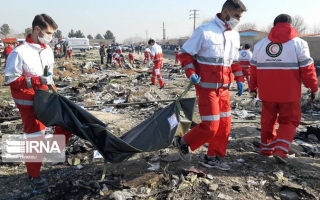COVID-19 Impact in Jamaica: A Function of Risk Management

Collectively all countries were caught off guard –some more than others– by the initial outbreak of the COVID-19 epidemic, which raced to pandemic category, as designated by the World Health Organisation (WHO) by March 11. COVID-19 arrived a little more than 100 years after the 1918 influenza pandemic (Spanish Flu). During the interim the world encountered and survived epidemics such as Ebola, Influenza A (H1N1) and Severe Acute Respiratory Syndrome (SARS) along with the perennial influenza.
Nobody, it seems (except movie writers) anticipated a public health disaster of this magnitude. This is evident, for example, by the fact that the Federal Emergency Management Administration in the United States of America (USA) had inadequate stock of ventilators to treat acute cases of COVID-19. As at April 18, 2020 there were 2,245,872 confirmed cases, 152,707 confirmed deaths in 213 countries or territories, according to figures compiled by the WHO.
However, once the outbreak of COVID-19 in the Chinese city of Wuhan was announced in December 2019, the race began in earnest with national governments trying to control the spread and disruptive impact of the deadly disease on their populations and economies.
The responses by countries fall in two broad categories: risk management (assessment and treatment) as well as recovery strategies. Having been alerted initially of the existence of the epidemic, governments are left to assess the likely impact of the disease on critical assets with human life being at the top. The government of Jamaica quickly determined that its medical infrastructure –including ventilators, hospital beds, quarantine facilities, health professionals and testing devices were inadequate. The health profile of the Jamaican population- with its high levels of chronic, non-communicable diseases was also factored into the risk analysis process.
Older Demographic
Other countries engaged in their individual risk assessments. The effectiveness of those processes is, logically, reflected in the impact (positive or negative) on populations and economies. Some analysts attribute the large death rate in Italy and Spain to them having older demographic compared to the USA. In that country, New York State was considered ripe for the virus because of population density in the capital. In addition, there was a shortage of critical health care assets like in Jamaica.
Having assessed their risks (adequately or inadequately), countries then moved to devise treatments and mitigation strategies. These ranged from physical (social) distancing to the near-total lock down of socio-economic activities. In between the two extremes, governments implemented variations including curfews and quarantining of some communities.
While the GOJ has achieved successes in the quarantining of sections of Bull Bay in St Andrew and Corn Piece in Clarendon, the implementation of a lock down of St Catherine has exposed some weaknesses. One tactical weakness in the implementation plan (?) for the St Catherine lock down appears to be the lack of involvement of local government and community-based organisations and influencers. The process appears to be too top-down. At the time of writing this article, the government is reportedly contemplating the lock down of a wider area of the country. It is critical that the logistics be properly worked out.
Of course, countries cannot remain in lock down mode or mitigation phase for too long. This will result in significant or irreparable damage to the economy at the national level and threaten the continuity of businesses. This is why US President Donald Trump is anxious to move to the recovery phase and has begun to discuss strategies. Here in Jamaica, farmers are lamenting the pile up of produce. At the time of writing it is not clear what the recovery strategies of the government are, save that it has signalled that Jamaica will access emergency funding from the International Monetary Fund.
Like national economies, firms are required to similarly implement a risk management process to inform the development of strategies to respond, recover and restore their businesses. Local companies and organisations have an opportunity to (re)examine their level of resilience at the upcoming webinar series on Business Continuity Readiness being hosted by the Jamaica Stock Exchange eCampus.
Byron Buckley is a media and communication specialist for more than 30 years. Visit Prangle Media to read his blogs or send feedback to editorial@oldharbournews.com.
Old Harbour News is a community-based online news media outlet based in Jamaica with more than 300,000 unique visitors since 2013. However, we are soliciting your support to continue provide independent journalism and unique stories tailored just for you. Your contribution, however small it may be, will ensure our service to you remain independent and grow to serve you better. Click the DONATE BUTTON now to support Old Harbour News. Thank you.

































